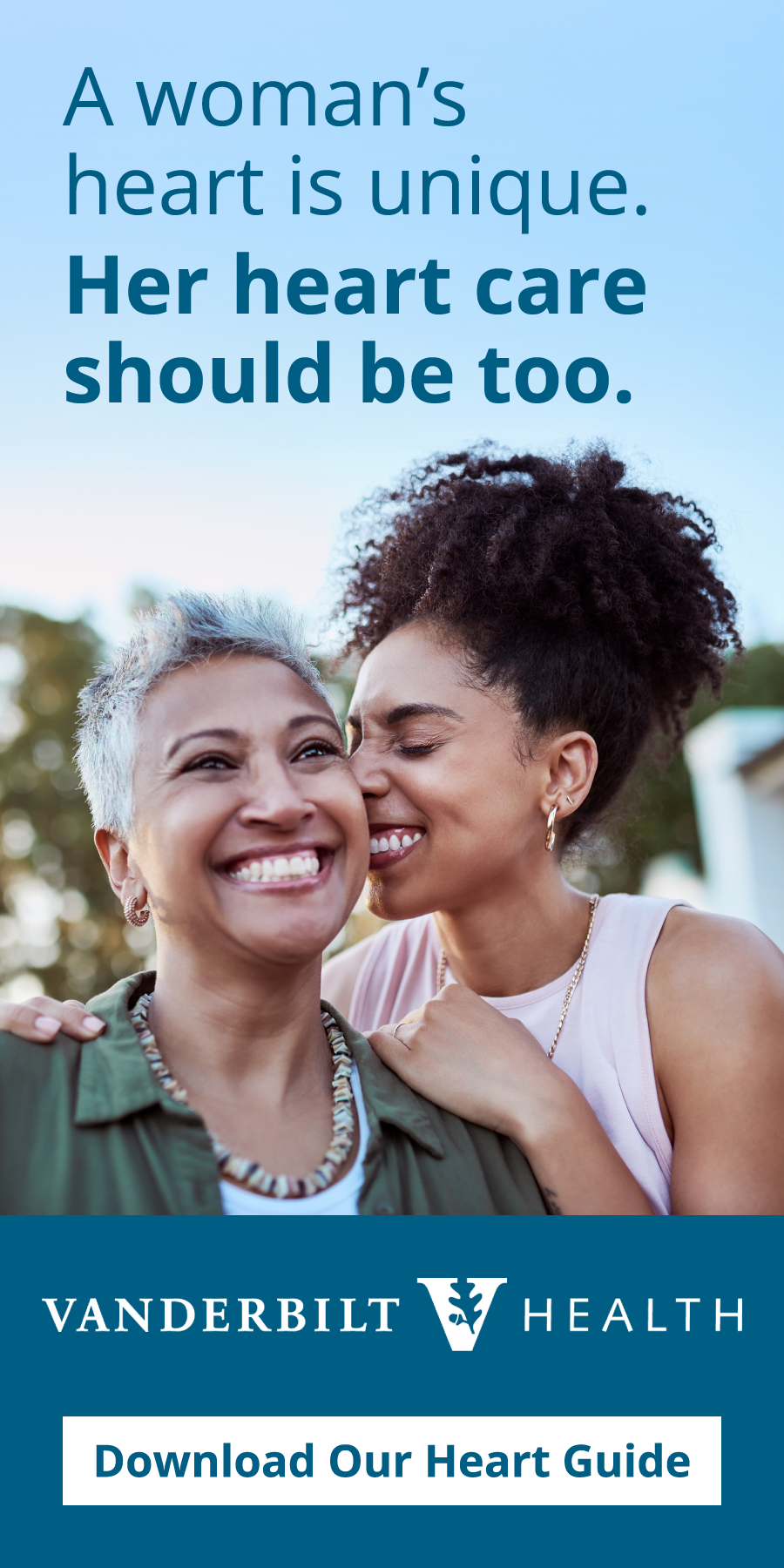Heart disease – not cancer – is the leading cause of death for women in the U.S.
While heart disease is often considered an illness that strikes older men, this myth couldn’t be further from the truth.
According to the American Heart Association, heart disease is the No. 1 cause of death among women, resulting in one out of every three deaths per year.
“Because it has long been considered an illness that primarily affects men, many women are unaware of their risk of developing heart disease,” said Dr. Temitope Akinjogbin, a cardiologist at Vanderbilt Women’s Heart Center. “This lack of awareness may prevent women from recognizing their symptoms and seeking medical attention when they need it.”
Akinjogbin, who specializes in cardiovascular care for older adults, said that women of all ages are at risk. “Although the risk increases when women reach menopause, heart disease can occur at any age,” she said.
Symptoms in women
“Women are often busy caring for their families and may downplay their own symptoms without realizing they are actually signs of a serious medical condition.”
People may be surprised to learn that chest pain — the symptom most typically associated with a heart attack — may not occur in women. “Women may experience neck or jaw pain instead of what we consider typical chest pain, or they may have no pain at all,” Akinjogbin said. Other symptoms in women include shortness of breath, arm numbness, nausea, excessive sweating, dizziness or unexplained fatigue.
Other, more subtle symptoms may present themselves over time and indicate a chronic heart condition that could ultimately lead to a heart attack or stroke. These symptoms are often easily ignored or attributed to other medical conditions.
“Women are often busy caring for their families and may downplay their own symptoms without realizing they are actually signs of a serious medical condition,” Akinjogbin said.
Heart disease risk factors for women
While heart health may vary between the sexes, many of its causes are the same. These include smoking, physical inactivity, unhealthy eating, poor sleep habits, high blood sugar, high blood pressure and high cholesterol.
The simple fact of being a woman also brings additional risk factors, Akinjogbin said.
For example, women who develop the pregnancy-related form of high blood pressure known as preeclampsia carry an increased risk of heart disease throughout their lives, even long after they give birth. Women who use oral contraceptives are also at an increased risk, as are women experiencing the hormonal changes of menopause.
Heart health for women
For Akinjogbin, preventing and managing heart disease in women comes down to awareness and a healthy lifestyle.
“Exercise regularly, eat a healthy diet, don’t smoke, control your blood glucose, blood pressure and cholesterol, and know the signs of heart disease. And, of course, if you think there’s something wrong, get checked by a doctor,” she said.

Vanderbilt Women’s Heart Center
Heart disease is the leading cause of death in women in the U.S., yet it often goes under-diagnosed and under-treated. Vanderbilt Health offers a specialized program tailored to women’s heart health needs, spanning from adolescence and childbirth to menopause. Women’s Heart Center experts work together to treat heart disease with the special needs of women in mind.

